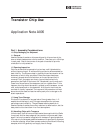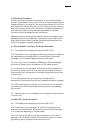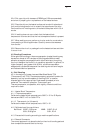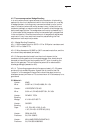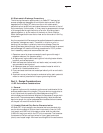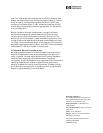
3
3.2.4 Pick up a chip with tweezers (EREM type 5 SA recommended)
and orient it properly prior to placement on the heated surface.
3.2.5 Place the chip on the heated surface and scrub with a back-and-
forth motion being careful not to scratch the top surface of the chip.
Continue this until wetting occurs; this should take place within 3 to 4
scrubs.
3.2.6 If wetting does not occur check that the heater block
temperature is correct and that the inert atmosphere blanket is present.
3.2.7 When wetting occurs, perform a circular scrub for one stroke to
insure wetting of the chip perimeter. Carefully remove the tweezers
from the die.
3.2.8 Remove the circuit or package from the heated surface and allow
it to cool in air.
4.0 Bonding Procedures
Either gold-ball bonding or thermocompression (wedge) bonding may
be used on almost all HP transistors. Bonding pad sizes and metal
adhesion strengths are compatible with either technique, thus giving
the circuit designer the flexibility to use either approach. In general, for
higher frequency use (greater than 8 GHz), a thermocompression
wedge bond is preferred because of the resulting shorter bond lengths
and reduced electrical parasitics.
4.1 Ball Bonding
HP, in the majority of cases, has used West Bond Model 7700
(Thermosonic) and 7716 (Thermocompression) series ball bonders for
assembly, but any bonder capable of handling 0.001" or smaller
diameter gold wire is appropriate. Prestressed (annealed) wire is
preferred. Two modes of operation, Thermosonic and
Thermocompression, are possible, with slightly different conditions
required for each.
4.1.1 Heater Block Temperature
4.1.1.1 Thermocompression
Calibrate the heater block temperature to 300°C ± 10° for Si Bipolar
devices and 260°C ±10° for GaAs FETs.
4.1.1.2 Thermosonic (or Ultrasonic)
Calibrate the heater block temperature to 150°C ± 10°.
4.1.2 Calibrate bond force as follows:
Ball Bond: 0.0007, 15-20 gram MWB: 0.0007, 20 ±2
0.001, 20-30 gram 0.001, 25 ±2
4.1.3 Proceed with bonding according to machine specifications.
4.1.4 General Comments:
The normal approach is to place the ball on the circuit bonding pad and
then complete the second bond to the chip.



